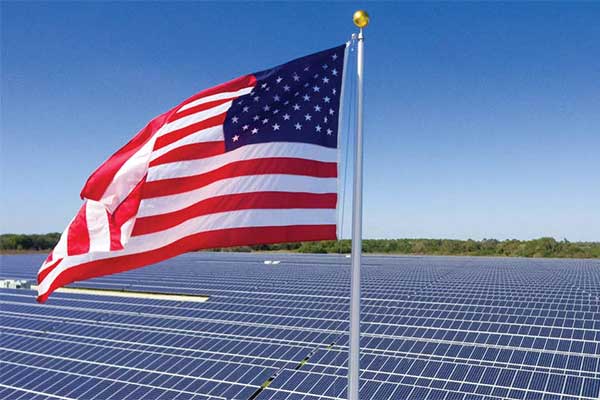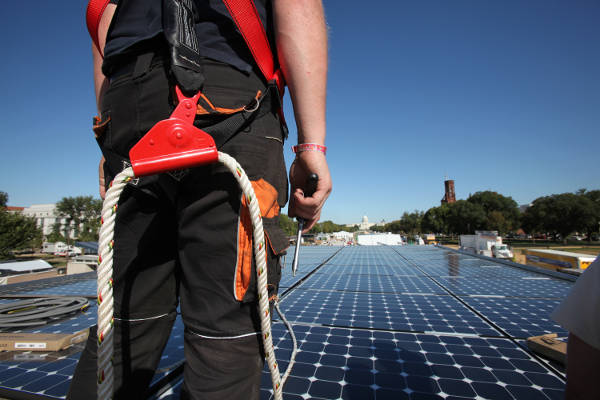Washington DC — Driven by strong solar and wind power growth, electrical generation by renewable energy sources (i.e., also including biomass, geothermal, hydropower) accounted for 21.02% of total U.S. electrical generation in 2021, exceeding U.S. Energy Information Administration (EIA) forecasts, according to a SUN DAY Campaign analysis of newly-released EIA data.
The latest issue of EIA’s “Electric Power Monthly” report (with data through December 31, 2021) also reveals that in 2021, solar (including distributed rooftop systems) increased by 25.23%, making it the nation’s fastest-growing source of electricity last year. Wind grew 12.37% compared to 2020. Combined, solar and wind grew by 15.96% and accounted for more than one-eighth (13.05%) of U.S. electrical generation (wind – 9.12%, solar – 3.93%). Moreover, wind and solar combined now provide more than three-fifths (62.08%) of the generation by renewable sources.
In addition, geothermal posted a gain of 2.19% while electricity generated by wood + other biomass increased by 1.42%. Taken together, generation by all non-hydro renewables grew by 14.08%.
Reflecting severe drought conditions during the year, though, hydropower fell by 8.78%. That notwithstanding, all renewables combined – including hydropower – produced 6.17% more electricity than a year earlier. However, inasmuch as electricity generation by all sources increased by 2.86%, renewables’ share of the total increased only slightly – from 20.37% in 2020 to 21.02% in 2021. Nonetheless, that exceeded by more than 5% EIA’s forecast of a 20% share for renewables in 2021 as it regularly predicted in its monthly “Short-Term Energy Outlook” reports last year.
Renewable sources also expanded their lead over nuclear power, providing one-eighth (12.50%) more electricity than the nation’s atomic power plants (18.69% of total U.S. generation). Natural gas remained as the top source of U.S. electrical generation with a 37.82% share but down from 40.12% a year ago. Coal rebounded into second place (with a 21.58% share), growing 16.20% compared to 2020.
Longer-term trends, though, still suggest the gradual and probably accelerating displacement of coal and nuclear power by renewable energy sources, especially solar and wind.
EIA expects 21.8 gigawatts (GW) of new utility-scale solar capacity to come online in 2022 along with 7.6-GW of new wind capacity and 4.4-GW of small-scale solar capacity. Hydropower also seems poised to rebound in 2022; it increased its output by 19.26% in December 2021 compared to December 2020. As a consequence, EIA now expects renewables’ share of U.S. electrical generation to top 22% this year and exceed that of coal while nuclear power’s share declines further.
“2021 was a good year for solar and wind notwithstanding headwinds such as the Covid pandemic and disruptions in global supply chains,” noted the SUN DAY Campaign’s executive director Ken Bossong. “Together with other renewable energy sources, they built on their growing lead over nuclear power, will likely overtake coal in 2022, and continue to cut into natural gas’s current dominance.”
# # # # # # # # #
NOTE: Unless otherwise indicated, the electricity figures cited above include EIA’s “estimated small-scale solar photovoltaic” (e.g., rooftop solar systems) which accounts for 29.95% of total solar output and almost six percent (5.60%) of total net electrical generation by renewable energy sources.
—
This analysis of newly-released EIA data was provided by the SUN DAY Campaign.













Comments